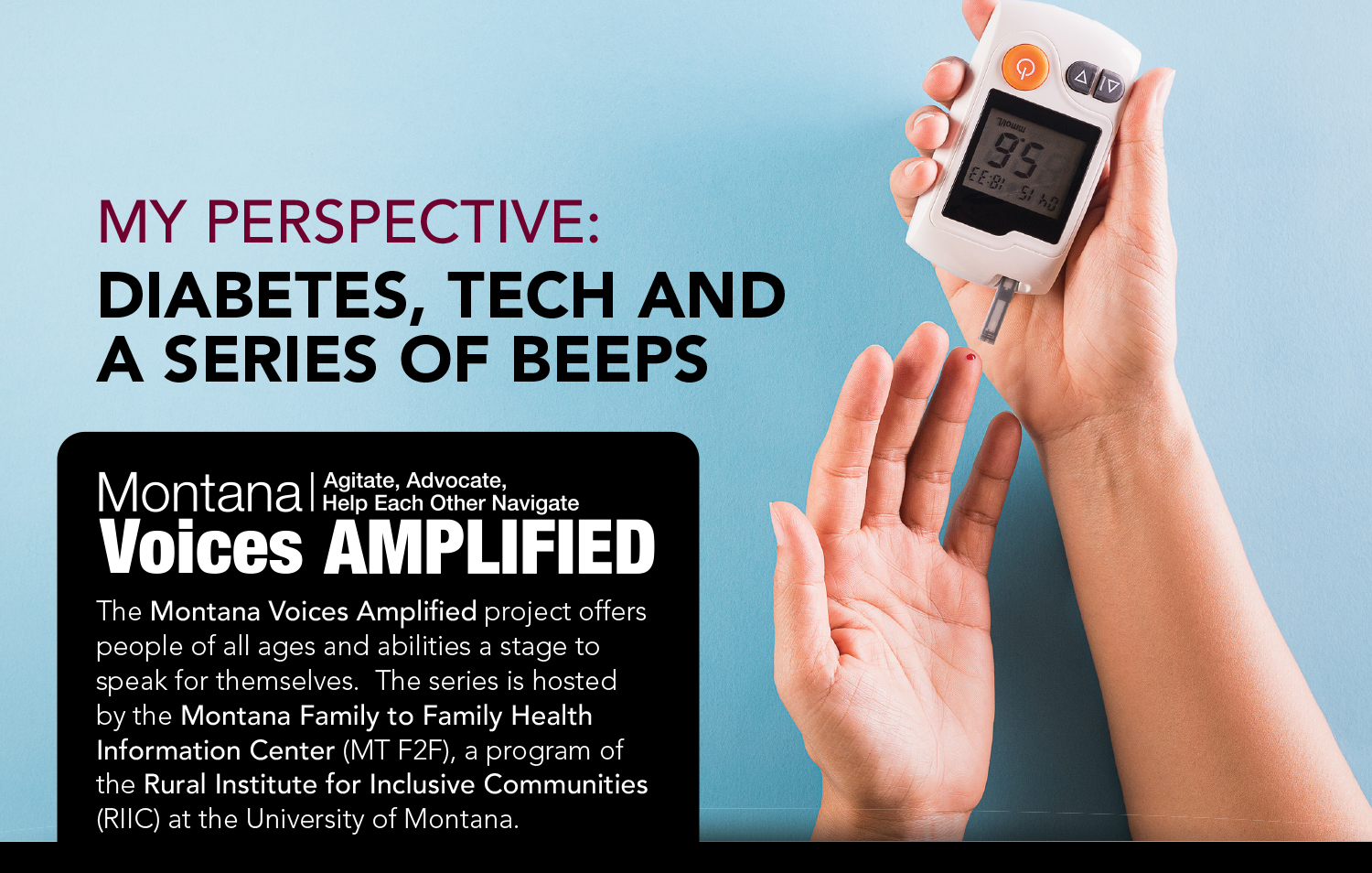My Perspective: Diabetes, Tech and a Series of Beeps

By Ed Worrell:
Ed Worrell is co-founder and CEO of OverHere Consulting. Based in Great Falls, OverHere Consulting carries assistive technologies for vision impairment and provides training to individuals, schools, and government agencies. Ed is blind, diabetic, and loves helping the visually impaired utilize assistive technology.
Why can’t I overindulge in a buffet without spiking or crashing? Why can’t I go on a trip without stressing over forgotten testing supplies? Why can’t I get a night’s rest without any beeping alerts? This is physically and emotionally exhausting. Just because my pancreas tapped out, I am seen as “different.” I’m the butt of all diabetic jokes. I’m the guy with an invisible disease that 99% of the general public misunderstands and confuses with Type 2 diabetes. Some days I wish I could enjoy a meal without someone making comments like, “Can you eat that?” or, when witnessing an injection or bolus[1], “Oooh, I’m going to pass out.” Sometimes, it’s okay to make jokes about it. Other times, it just gets old.
Now that I’m off my soapbox, here are a few of the daily techie things I use for my diabetes management.
[1] For a person with diabetes, a bolus is a dose of insulin administered as a shot or through an insulin pump. Usually taken with meals or to correct a high glucose reading.
Talking Glucometer
Because I am blind, one of my most important pieces of tech is my talking glucometer. I utilize the ReliOn VOICE sold by Walmart. Yes, I know it’s not the most accessible one on the market; most of the menus aren’t spoken aloud for the blind or low-vision user. But it does speak the blood sugar reading aloud after applying the correct amount of blood on the test strip. I use this meter because I can go to any Walmart and purchase test strips; I don’t have to order them. Sometimes the most accessible option isn’t the best or most convenient option.
Continuous Glucose Monitor (CGM)
I mostly rely on the Dexcom G6 CGM. The Dexcom is placed on your abdomen, worn for 10 days and then replaced. The monitor is stuck on the skin and uses a wireless transmitter to send blood sugar readings to your smart phone every five minutes. This particular device is a life saver, but it does have a drawback... The app can send too many alerts and create a mild case of alert overload.
The Dexcom CGM is fully accessible to Voiceover users on iPhone and TalkBack users on Android. A family member or close friend can download the Dexcom Share application and be alerted when your blood sugar readings are out of range. If you really love the person, you can set them to get alerts for your high blood sugars, low blood sugars, rise rate alerts, rapidly falling alerts and even low soon alerts. I suggest enabling all of them so they understand what you’re going through... OK, maybe discuss which alerts they want. You don’t want the loved one to stop loving you because of overzealous Dexcom alerts.
Insulin Distribution
I honestly have nothing fancy to share here. I use the NovoPen to distribute my short-acting or bolus insulin. The NovoPen administers insulin in half-unit increments which means more accurate doses. For my long-acting, or basal insulin, I utilize the Tresiba insulin pen.
Logging
To keep track of all the data on my iPhone, I use the built-in iOS Health application. This app not only allows me to track my insulin, it also logs my blood sugars imported from Dexcom. I can view my activity, exercise levels/time, heart rate, blood pressure and much more. It’s a powerful tool if you love data and need an accessible platform to track your health needs.
Having Type 1 diabetes has given me a wealth of knowledge about my body and an opportunity to see how different external forces impact my health and way of life. I’ve learned that the only difference between me and a non-diabetic is that I have to artificially keep myself alive. My philosophy of diabetes is that I can control 90% of it by the way I live my life. The other 10% is left to chance. My knowledge and experiences have prepared me to deal with those surprises.
This is not a comprehensive review of accessible diabetes management, but represents what I use as a blind diabetic to manage this temperamental disease. I hope you can learn from my experience over the last 30+ years of being a diabetic and find something that works for you or someone you love.
Disclaimer:
This publication was developed under Grant H84MC32752 from the Health Resources and Services Administration (HRSA), Family to Family Health Information Center, $96,750. Views and opinions expressed in this article are the author’s and do not necessarily reflect the official policy or position of the Montana Family to Family Health Information Center, the Rural Institute for Inclusive Communities, the University of Montana, or HRSA.

